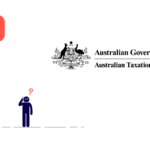No matter whether you’re at the helm of a small business with a few employees or the CEO of a multinational behemoth, Intellectual Property (IP) is a serious matter. Protecting your own IP while avoiding infringements on another entity’s IP is the name of the game. There are dire consequences if you lose.
Here are a few cautionary tales of businesses who faced the consequences of IP mistakes and incursions. There are some weighty lessons to be learnt here.
Burger King
It might be hard to feel sympathy for a multibillion-dollar conglomerate like Burger King, but it goes to show that even the big dogs get bitten by fleas. Nobody is immune to IP issues.
You’ve probably noticed we don’t have Burger King in Australia – we have good old Hungry Jacks instead.
Do you know why? One little old takeaway corner joint in Adelaide.
Back in the 70’s Burger King, who obviously owned their trademark in the USA and other countries, decided to spread their shadow over the Pacific and enter the Australian market. However, they hit a tiny brick wall.
A single takeaway shop had already trademarked ‘Burger King’ in Australia. Despite the wealth, weight and power of the international fast-food juggernaut, they had no leg to stand on. Their failure to secure their IP in Australia ahead of their expansion forced them to create a new trading name for their Australian franchisee – Hungry Jacks.
The lesson?
Just because you own your IP in one country, doesn’t mean you own it in another.
If you ever plan to expand your own business operations to foreign shores, think ahead to see if you can register trademarks and copyrights in anticipation of your move.
If you can’t, new naming contingencies and alternate IP plans must be concocted.
As an aside, if you are thinking about foreign expansion, you should also consider registering foreign web domains while you’re at it.
Crocs
Crocs Inc, manufacturers of those less than fashionable (yet highly popular) ‘plastic clogs’ made a huge early mistake when they launched their unique design back in 2002 at a Florida boat show.
After their launch, copycats and similar sandal designs popped up like ground hogs, flooding the market and chipping away at genuine Crocs sales and market share.
Crocs took the hint and sought IP protection in 2004. Since then, they have filed, fought and lost several high-profile cases across the EU. Why? They were too late.
In both Australia and the EU, if you’ve already released your invention to the public, there’s a very slim window for you to protect your design.
Ideally this should have happened well before launch. Crocs Inc simply took too long.
The lesson?
Don’t gift your idea to the world – protect it first.
“This judgment should serve as a useful reminder to designers to think about design protection early,” said John Coldham, a director at the law firm Gowling WLG.
If you have an original product, design or invention, be absolutely certain that you’ve properly filed for IP protections before you launch your product.
Only then will you have a legal case for IP infringement should someone else stroll along and snipe your idea.
Louis Vuitton
Let’s have a closer look at 2 cases starring luxury goods company and fashion icons Louis Vuitton with wildly different outcomes. There are some key IP takeaways here.
Case 1: Louis Vuitton vs Louis Vuiton Dak
Louis Vuitton filed a trademark dispute against a chain of South Korean fried chicken restaurants called ‘Louis Vuiton Dak’. Not only was their name exceptionally similar to the luxury brand, their packaging and logos were also strikingly familiar.
The outcome of the case was clearly in favour of Louis Vuitton and the fried chicken business was forced to pay reparations and change their trading name and branding.
How did they react to the ruling? They immediately changed their name to ‘LOUISVUI TONDAK’ in defiance and continued trading. Not too smart. They were swiftly hit with another $14.5 million dollar noncompliance fine for their efforts.
The lesson?
Be exceptionally careful when registering your trading name and constructing your branding. If you fall too closely to another registered entity, you could face serious monetary consequences. Adding insult to injury, you’ll also need to reconstruct your IP and branding from the ground up.
Due diligence, thorough trademark research and consultation with legal services is highly recommended before you launch a business.
P.S. If you do get hit with a court ruling, please don’t play with fire and do the exact same thing again.
Case 2: Louis Vuitton vs Haute Diggity Dog
In an interesting case with quite a different outcome, the fiercely protective fashion icon noticed a pet brand was seemingly trading off their name.
Haute Diggity Dog is a satirical pet products company. They decided to offer a mock take on the exclusive Louis Vuitton brand through their dog toys. Specifically, they created a product dubbed ‘Chewy Vuiton’ – a chew toy which strongly resembled Louis Vuitton’s handbags.
The litigious company sued Haute Diggity Dog for IP infringements.
In a turn many didn’t see coming, they actually lost the case due to the exemptions offered under what’s deemed ‘parody’ use of an IP. After successfully arguing their pet products were indeed parodies and covered under fair use, Haute Diggity Dog walked away victorious.
The ruling noted that no reasonable person would confuse the two brands and that parody was clearly at play.
The lesson?
Make sure you thoroughly understand IP exemptions such as parody and fair use when creating your products and naming conventions. If you fly this close to the sun, you want to be sure of your positions and legal rights.
Having said that, parody use of an IP can be a dangerous game and you should tread very carefully if your business decides on this kind of avenue. The outcome of the case could have gone the other way with a few missteps.










